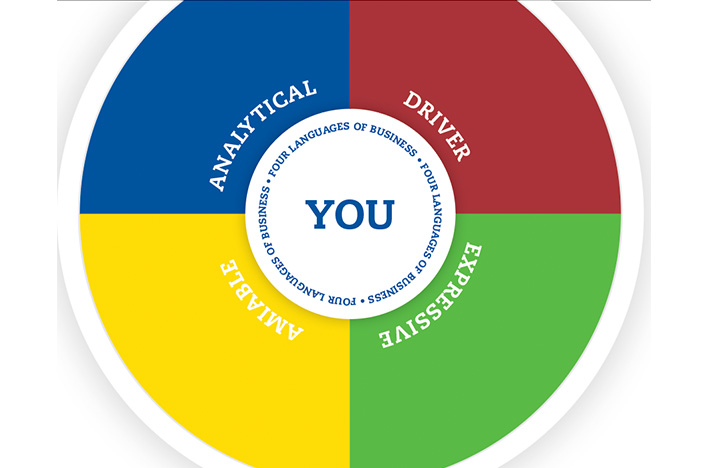Early in my career, I called on a client who was a friend outside of work. No one frustrated me more in the business arena. I would present to her on a Friday afternoon; she’d give me feedback that my proposal looked great and she would work on putting her plan together over the weekend and get back to me Monday. I would come in Monday morning to a voicemail that she was sorry she wasn’t able to buy my proposal … maybe next time.
WHAT? How could everything look great Friday when I was the last to present, and now I’m out? You can be honest with me; give me the straight feedback as to what I could have improved with my proposal so I know for next time. I never got it, so I operated blindly for future presentations.
Where was the disconnect?
I was driven to study the sales process to better understand where that disconnect existed, and now I know — we spoke two different languages.
Personality quadrant theorists say we process information in basically four different ways. (Wouldn’t it be easy if we all fit nice and neatly into square boxes — but the theory has daily application!)
Breaking down the information, you can easily identify how you process information and how your customer processes information. The goal is for you to be able to modify the way you process, the language you speak, and learn to speak your client’s language.
ANALYTICAL
The first quadrant is the analytical quadrant. The operative word for this language is information — they simply cannot get enough.
This is the customer who wants to learn every single detail about your product. They don’t really care what time it is, they want to know how the watch is made. You need to be very specific and detailed about the features and benefits of your product and deliver your information in a very systematic and logical way without emotion — just the facts.
You can easily identify someone who speaks the analytical language by the detailed questions they ask. Key qualities include closed body language and lack of emotion in the buying decision. They dislike confrontation and will retreat if the situation becomes adversarial.
They may be a challenge to close because they worry about some missing piece of data that might impact their decision. Your response in “analytical speak” is to recap detail by detail why they should buy your product.
DRIVER
Customers who speak “driver” enjoy confrontation. You may be very direct with them in delivering your information.
The operative word for this language speaker is control. They want you to get to the point as quickly as possible and deliver the bottom line. They won’t want to see all the details that the analytical does, but if asked, you better have them readily available.
You always want to offer this client at least two options; they then hold the power card to decide which option they want to buy. This feeds into the strong need for control of a situation.
You may identify someone who speak this language easily by the directness of the questions they ask and their aversion to “chit-chat.”
EXPRESSIVE
The third language many speak is the language of ideas or the expressive language. These are your visionaries — you need to paint the picture of how your product will impact them. Benefits need to be presented with ideas and not details.
Speakers of this language don’t avoid confrontation but prefer to build partnerships with you. They will freely give you information about their business to help you identify how your product can help them. They are by nature gregarious, open with their body language.
You need to adjust your language to ensure you all always speak in terms of ideas; they love trying anything new or out-of-the-box, versus the analytical language speakers who want to do everything the way they’ve always done it before.
AMIABLE
The final language spoken is the amiable. This quadrant of speakers relies on building a relationship with you. They will not buy from you until they believe and trust in you.
Trying to sell them anything before you have built a relationship with them is futile. The care and precision you took in building a proposal for an analytical needs to be manifested with this language speaker in time building a relationship. They, too, are averse to confrontation. Their operative word is relationship, and they will stay a customer with you once a relationship is established.
PUTTING IT ALL TOGETHER
When giving this presentation to my sales coaching clients, I ask them to list their top 10 customers and what quadrant they think they fall into.
As they struggle to identify their own quadrant, I ask if they had to buy a new laptop today, what would they do?
- Analytical trainees reply they would go on the internet and research, research, research. It would take time, so it’s highly unlikely they would buy today.
- Drivers respond they would ask a reliable source and head out to a store and just buy it.
- Expressives are excited at the prospect because they would seize the opportunity to buy the newest laptop with all the bells and whistles that have been added.
- Amiables ask all their trusted friends for advice and rely on their help to decide on the purchase.
You may speak two languages that are side by side — for example, a driver-analytical or an expressive-amiable. You aren’t likely to speak the language that’s cross-quadrant.
My goal is for you to learn to speak all four languages fluently so you’re able to better communicate and connect with your customer!


